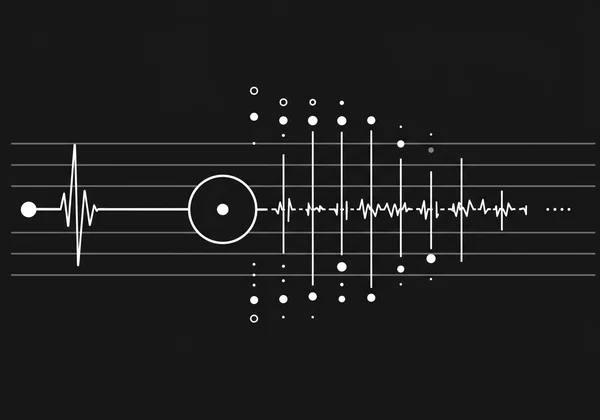Online Metronome Subdivisions: Perfect Rhythm Guide
Ever hit a rhythmic snag? You practice scales and chords, but that precise timing feels out of reach. What if your metronome could be more than just a click? Mastering metronome subdivisions isn't just about keeping time – it's about transforming your online metronome into a powerful rhythm coach that helps you truly internalize complex patterns and unlock unparalleled musicality. Let's dive in and revolutionize your rhythm practice.
Understanding Metronome Subdivisions & Beat Division
Music, at its heart, is all about rhythm and timing. Metronome subdivisions break down each primary beat into smaller, equally spaced units. Think of it as zooming in on the pulse. Instead of just hearing "click-click-click," you'll hear "click-a-click-a" or "click-i-ty-click-i-ty," allowing you to feel the nuances within each beat. This process of beat division is fundamental for developing precise timing and a deep understanding of rhythmic structures.
What Are Basic Rhythmic Values (Eighth, Sixteenth Notes)?
Let's start with the basics. If your metronome is set to 60 BPM, each click represents one beat.
-
Eighth notes: Subdividing the beat into two equal parts means you hear two clicks for every one beat.
-
Sixteenth notes: Breaking the beat into four equal parts gives you four clicks per beat. These basic rhythmic values are the building blocks of most music. Practicing with these subdivisions helps you place your notes exactly where they need to be, eliminating sloppiness and enhancing clarity. Many musicians use an online metronome to visualize these divisions.

Exploring Triplets, Dotted Notes, & Compound Meters
Beyond these basic divisions, there's a whole world of rhythmic possibilities waiting.
- Triplets: These involve dividing the beat into three equal parts. They are common in blues, jazz, and classical music, adding a unique feel.
- Dotted notes: A dotted note adds half of its original duration to its value, creating a longer, often syncopated feel.
- Compound meters: Unlike simple meters (like 4/4 or 2/4) where the beat naturally divides into two, compound meters (like 6/8 or 9/8) feature a beat that naturally divides into three. Understanding these complex divisions is crucial for playing diverse musical styles accurately. Learning to practice with advanced metronome settings for these is key.
The Power of Subdivisions for Rhythm Practice
So, why bother with subdivisions? Simple: they're the quickest, most effective way to truly elevate your rhythm game. They force you to dig deep into the beat's mechanics, leading to profound improvements.
Improving Timing, Precision, and Musicality
When you practice with subdivisions, your ear becomes more attuned to minute rhythmic discrepancies. This leads to dramatically improving timing, especially in fast or intricate passages. You'll develop incredible precision, making your playing tighter and more professional. Moreover, this rhythmic accuracy translates directly to enhanced musicality. Your performances will sound more intentional, controlled, and expressive because you're truly in command of the rhythm. For a customizable tool, try our free metronome today.
Developing a Stronger, More Reliable Internal Clock
The real magic of consistent subdivision practice is the development of your internal clock. Initially, the metronome guides you. But as you consistently practice with subdivisions, your brain begins to internalize these rhythmic patterns. You'll find yourself able to play complex rhythms accurately even without the metronome clicking every subdivision. This internal rhythmic foundation is invaluable for improvisation, sight-reading, and playing with other musicians. A reliable internal clock is essential for every musician.

Advanced Metronome Exercises for Complex Beats
Ready to put those subdivisions to work? These advanced metronome exercises will push your rhythmic boundaries and help you conquer challenging musical passages. Remember to start slow and gradually increase the tempo.
How to Practice Syncopation and Off-Beat Rhythms
Syncopation and off-beat rhythms involve placing accents or notes on the weaker parts of the beat, or between beats, creating a rhythmic push-and-pull.
- Exercise 1 (Accent Displacement): Set your metronome online to a steady quarter note click. Now, subdivide the beat mentally into eighth or sixteenth notes. Practice playing a simple rhythm, but intentionally accent different subdivisions. For example, in 4/4 time with sixteenth notes, try accenting the "e" or the "a" of each beat (1-e-&-a).
- Exercise 2 (Silent Subdivisions): Play only the syncopated notes, but feel all the subdivisions silently in your head. This builds your internal rhythm and helps you land precisely on those off-beats. This is a powerful rhythm practice tool.
Building Speed and Fluency with Gradual Subdivision Increase
To truly master complex beats and passages, a gradual subdivision increase is essential.
- Exercise: Start a difficult phrase at a very slow tempo with sixteenth-note subdivisions active. Play it perfectly five times in a row.
- Next step: Increase the BPM by a tiny increment (e.g., 2-5 BPM) and repeat.
- Challenge: As you get more comfortable, try removing some of the audible subdivisions, forcing yourself to rely more on your internal clock. This builds true fluency and speed.
Mastering Subdivisions with Our Online Metronome
Now that you understand the immense value of subdivisions, let's explore how our online metronome can become your ultimate rhythm practice partner. Our free metronome is designed with professional features to make mastering complex rhythms effortless.
Step-by-Step Guide to Setting Subdivisions
Using subdivisions on our online metronome is intuitive:
-
Visit the Homepage: Go to start your practice.
-
Set Your BPM: Use the slider or direct input to set your desired tempo.
-
Choose Your Time Signature: Select the appropriate time signature (e.g., 4/4, 3/4) using the dedicated controls.
-
Activate Subdivisions: Look for the subdivision icons (representing eighth notes, sixteenth notes, triplets, etc.) and click on the one that matches your practice needs. You'll immediately hear the beat breaking down.
-
Start Practicing: Hit the "Start" button and immerse yourself in the subdivided rhythm. Our online metronome provides clear audio and visual cues.

It's straightforward to integrate powerful subdivision practice into your routine!
Leveraging Tap Tempo & Practice Timers for Focused Sessions
Our online metronome offers more than just standard clicks.
- Tap Tempo: Struggling to find the BPM of a song you're learning? Our tap tempo feature allows you to tap along to any rhythm, and the metronome will instantly calculate the BPM. This is incredibly useful for instantly matching the tempo of existing music and then applying subdivisions for detailed practice.
- Practice Timers: For dedicated practice, leverage the built-in practice timers. Set a specific duration for your session, and the metronome will keep track, helping you stay focused and consistent. These features ensure your online metronome sessions are productive and precisely tailored to your needs. Explore our advanced tools for musicians today.
Start Mastering Your Rhythm & Complex Beats Today!
Ultimately, mastering metronome subdivisions isn't just about nailing notes; it’s about grasping the very essence of music. It’s the shift from hesitant playing to confident, expressive performances. By consistently integrating subdivision practice into your routine, you’ll develop an unshakeable internal rhythm that will benefit every aspect of your musical journey.
Ready to break free from rhythmic challenges? Our powerful, free, and highly customizable online metronome is here to help you unlock your full potential. Start exploring subdivisions today! Visit our metronome.
Frequently Asked Questions About Metronome Subdivisions
How can metronome subdivisions truly enhance my playing?
Metronome subdivisions enhance your playing by providing a detailed framework for each beat. Instead of just landing on the main pulse, you learn to precisely place notes within the beat, leading to improved timing, precision, and overall musicality. This technique helps develop a robust internal clock for accurate rhythmic execution.
What are common time signatures, and how do they relate to subdivisions?
Common time signatures like 4/4 (four quarter notes per measure) or 3/4 (three quarter notes per measure) define how beats are grouped. Subdivisions break down these main beats into smaller units. For example, in 4/4, each quarter note can be subdivided into two eighth notes or four sixteenth notes. Our online metronome supports various time signatures metronome settings for your practice.
How do I effectively use MetronomeOnline.org's subdivision feature?
To effectively use our online metronome’s subdivision feature, simply visit the homepage, set your desired BPM and time signature, then select the subdivision icon (e.g., eighth notes, sixteenth notes, triplets) to hear the beat divided. Start slowly, then gradually increase tempo and even try removing subdivisions to test your internal rhythm. Explore the feature on our free metronome.
What is a good tempo for practicing complex rhythms with subdivisions?
There's no single "good tempo" for practicing complex rhythms with subdivisions. The best approach is to start at a tempo where you can play the rhythm perfectly without errors. This might be very slow initially (e.g., 60 bpm metronome or even slower). Once you can play it perfectly several times in a row, gradually increase the tempo by small increments (2-5 BPM at a time). Consistency and accuracy at slower tempos are more important than speed.